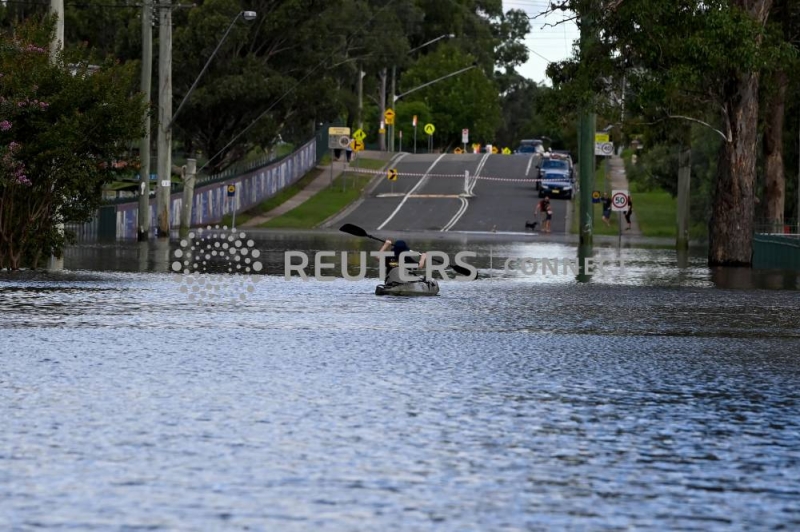Building climate resilience: Holistic approach needed
Making places in Nepal's mountainous terrain more resilient to an unpredictable and changing climate will require investment in a wide range of complex solutions. The government rose to the challenge, endorsing a strategic approach
Published: 11:28 am Mar 23, 2022

If ever there was a time and place that demonstrated the need to reimagine climate resilience, it was 2021 in Nepal. Two climate-related disasters in spring and fall brought heavy rains, floods and landslides that claimed dozens of lives, destroyed hundreds of homes and damaged hundreds more structures, including schools, bridges, roads, government buildings and hydropower stations.
The first onslaught began in June, when monsoons arrived two weeks earlier than usual and dumped more than 300 mm of rainfall on the central and western parts of the country in one week. In the two months that followed, heavy rains upstream triggered a massive erosion of glacial deposits, overtopping of a moraine lake, and the temporary damming and sudden release of water at an elevation of over 3,500 metres above sea level. This sent water and debris tumbling 40 km along the Melamchi River to the market town of Melamchi. The headworks of the $800 million project at Melamchi to deliver water to the capital Kathmandu was buried under a 10-metre layer of rocks and mud. The same weather system impacted other mountain districts of Gorkha, Manang and Mustang.
The second disaster came in October, two months after a typical Nepal monsoon season would have ended. Heavy rains moved across western Nepal, killing residents and damaging roads, bridges, hydropower stations and other infrastructure as well as paddy crops.
Making these places and others in Nepal's mountainous terrain more resilient to an unpredictable and changing climate will require investment in a wide range of complex solutions. The government has risen to the challenge, endorsing a strategic approach to promote green, resilient and inclusive development, or GRID, as the central development strategy of the country. This approach centres on sustainability, green growth, jobs, resilient infrastructure, and addressing exclusion and vulnerability, as the country continued to recover from the COVID-19 pandemic.
In late September 2021, the government and 17 development partners endorsed the Kathmandu Declaration on GRID.
Many facets of the Kathmandu Declaration are aimed at coping with the slow-moving catastrophe of melting glaciers and severe, unseasonal storms.
The government, with the support of partners, has started developing a 10- year GRID Strategic Action Plan and identifying new investments and policies to build resilience.
Under the Kathmandu Declaration, Nepal and its development partners - the World Bank, Asian Development Bank, International Monetary Fund and UN, as well as Australia, the European Union, Finland, France, Germany, Norway, South Korea, Switzerland, the United Kingdom and the United States - have identified up to $4.2 billion in potential future support, in addition to $3.2 billion already committed to GRID in Nepal. The next steps are in two broad areas: pinpointing physical risks before they turn into disasters and tailoring infrastructure – human-made and natural–to make potential disasters less disastrous.
The climate-related landslides, floods, debris flows and erosion are nothing new in South Asia, but what happened in Nepal last year was unprecedented.
To deal with this increased geohazard risk, technical teams have been working with governments to use satellites and drones to add to more traditional on-the-ground observations of unstable mountainsides.
Pilot projects using satellites to monitor mountainous regions of Nepal, Bhutan and India have spanned over 200 square kilometres in Nepal. These projects, a partnership between the Global Facility for Disaster Reduction and Recovery and the three national governments, identified slopes that were constantly being deformed, which can be early signs of potential landslides. This same technique was used to investigate the causes of the Melamchi disaster.
Experts found that the area around and upstream from Melamchi Bazaar was honeycombed with 163 hotspots for land displacement, that is, places where conditions were ripe for landslides. Watching for anomalous changes in these displacement points shows potential as a proxy for a coming risk of ground failure - and a potential way to alert those in its path, according to experts at an online conference in December about the disaster hosted by Nepal's National Disaster Risk Reduction and Management Authority.
Early intelligence about potential disasters is an integral part of Nepal's National Adaptation Plan, a sweeping $47.4 billion programme aimed at increasing climate resilience between 2021 and 2050. Covering agriculture, natural conservation, water resources and energy and other sectors, it aims to build resilience for those most vulnerable to climate impacts. Part of that plan could build on a $24 million Climate Investment Fund project to modernise Nepal's observation network and forecasting, which saved lives by making weather forecasts and flood warnings more accurate and timely.
The Melamchi disaster has also shown a need to expand hydromet observation networks into higher Himalayan elevations to understand the impact of climate change and set up an early warning system to reduce risks to life and property. When it comes to reducing and managing disaster risk, the adaptation plan singles out climate-induced floods and landslides in its forest areas, and fire control. Beyond improved coordination among federal, provincial and local governments, the plan aims to promote a culture of safety and climate resilience by setting a standard for land use that is sensitive to climate risk.
Only a holistic approach will do. As Anil Pokhrel, head of Nepal's disaster management authority, said at the December conference on increasing resilience after the Melamchi disaster, 'No single agency can address such complex risks. Joint actions from multiple ministries, provincial and local governments along with private sector can come up with solutions for building resilience.'
Karelia is senior disaster risk management specialist, WB. Zabarenko is a consultant with WB's climate communications team
A version of this article appears in the print on March 23, 2022, of The Himalayan Times.



